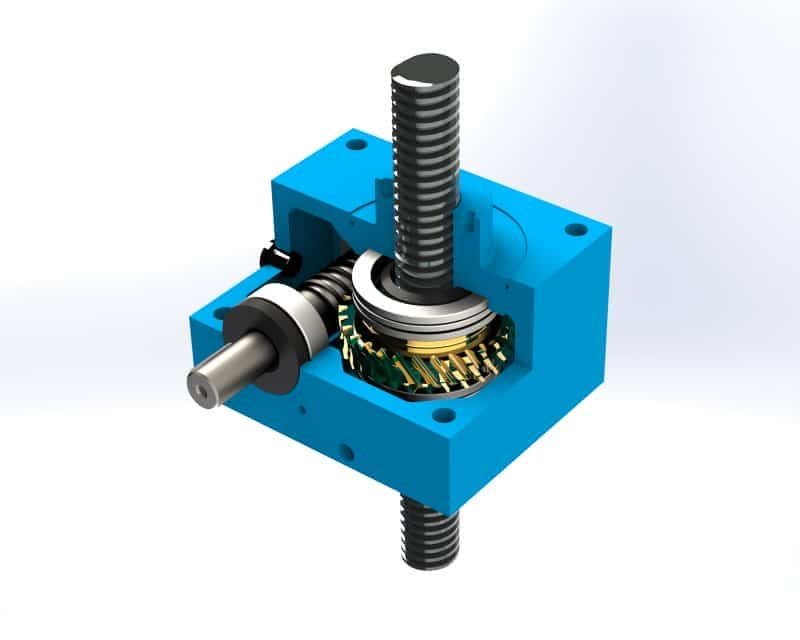
In the realm of mechanical engineering, efficient linear motion is a cornerstone of countless applications. Screw jacks, these seemingly simple mechanisms, emerge as powerful and versatile tools for achieving controlled lifting, pushing, and positioning tasks. Let’s delve into the core principles and functionalities of screw jack technology.
The Fundamental Mechanism:
At its heart, a jack screw operates on the same principle as a common screw and nut. A threaded screw rotates within a nut, converting rotary motion into linear displacement along the screw’s axis. By applying a torque (turning force) to the screw head or nut, the jack translates this into a lifting or pushing force along the vertical axis.
Types of Screw Jacks:
- Acme Thread: This is the most common type, offering a good balance between efficiency and self-locking ability. The threads have a trapezoidal shape, providing a wedging action that can prevent the jack from moving under load without an external brake (self-locking).
- Ball Screws: These utilize balls between the screw and nut, reducing friction and enabling smoother, higher-precision movement. However, they lack the self-locking ability of Acme threads.
- Lead Screw Jacks: These jacks are characterized by a large lead screw, resulting in a significant linear movement per rotation. This is ideal for applications requiring high travel distances.
Key Characteristics:
- Load Capacity: Screw jacks come in a variety of sizes and materials, offering a wide range of load capacities to suit diverse needs.
- Lifting Height: The travel distance of the screw jack depends on the lead screw length. Choosing the right lead screw ensures the jack can achieve the desired lifting height.
- Speed: While not as fast as hydraulic systems, screw jacks offer precise control over lifting or lowering speeds through the use of motors with adjustable gear ratios.
- Efficiency: Screw jack efficiency can be impacted by friction. Lubrication and proper material selection are crucial for optimizing efficiency.
- Self-Locking: Certain types of screw jacks, like Acme thread, possess self-locking capabilities, eliminating the need for additional brakes.
Applications Across Industries:
Screw jacks find application in a vast array of industries due to their versatility and reliability. Here are some examples:
- Manufacturing: Material handling, machine adjustments, press applications, and mold clamping.
- Construction: Lifting platforms, scaffolding adjustments, and formwork positioning.
- Energy: Wind turbine blade adjustments and solar panel positioning systems.
- Transportation: Access ramp adjustments and vehicle loading platforms.
Advantages of Screw Jacks:
- Simple and Robust Design: Their straightforward design makes them easy to operate and maintain.
- Cost-Effective: Generally less expensive compared to hydraulic systems.
- Reliable and Durable: Built to withstand demanding industrial environments.
- Precise Control: Offer exceptional control over lifting or pushing movements.
- High Load Capacity: Can handle substantial loads depending on the design and materials.
Conclusion:
Screw jacks are more than just a simple tool; they are a testament to the power of mechanical ingenuity. Understanding their core principles, functionalities, and advantages equips mechanical engineers to leverage these versatile workhorses in a variety of applications. By strategically incorporating screw jacks into their designs, engineers can achieve efficient, precise, and reliable linear motion across diverse industrial endeavors.
